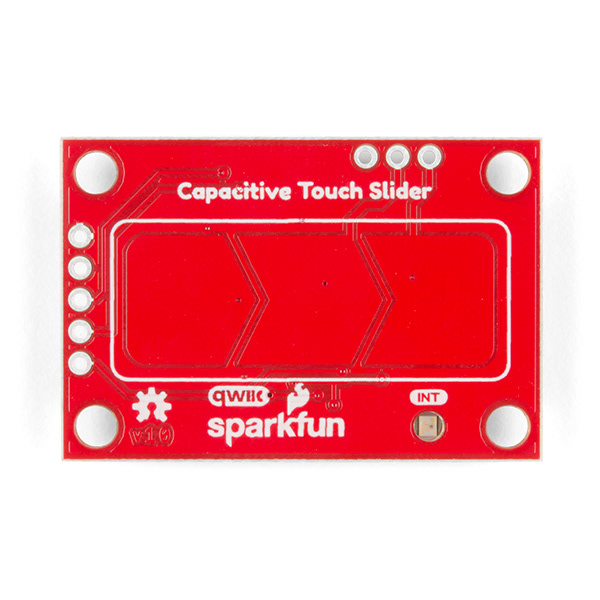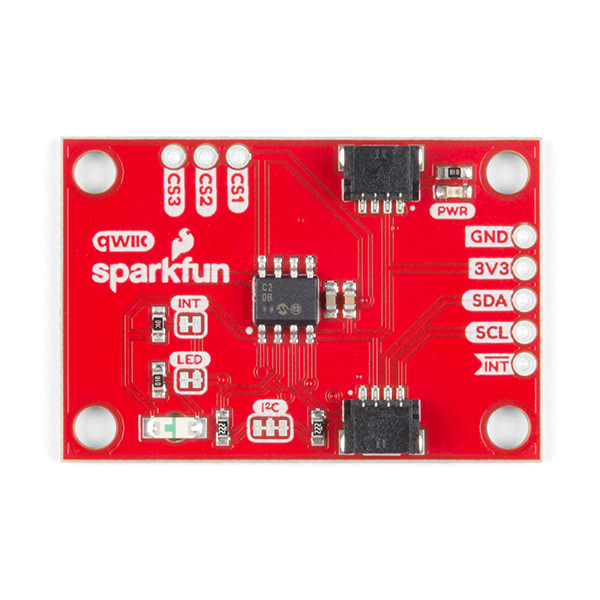The SparkFun Capacitive Touch Slider is a user-facing electronic breakout board with three unique capacitive touch inputs currently available on SparkFun Electronic's retail page.

Front of Board (Photo by SparkFun Electronics)

Back of Board (Photo by SparkFun Electronics)
Background
SparkFun Electronics is an open-source hardware company who is committed to helping the world achieve electronics literacy through the development of products and resources. During my internship at SparkFun Electronics, I fully designed, developed, and documented a user-facing, storefront product - a Capacitive Touch Slider - for SparkFun Electronics. The Capacitive Touch Slider is a capacitive touch breakout board which allows users to easily integrate touch capabilities into a science experience or an art project.
Product Prototyping Process
First, I designed the Printed Circuit Board (PCB). The process involved sourcing potential parts, researching the chosen Integrated Circuit (CAP1203), creating the slider footprint, and using Eagle Autodesk to design the PCB. Since SparkFun is an open-source company, the product repository is available on GitHub.
Developing the final version of the PCB involved user-testing the product to ensure a fluid user experience. More specifically, I moved the placement of the CS1, CS2, and CS3 breakout plated through hole pins from being next to the Capacitive Touch pads in the first iteration to being on top of the board in the final design. This change ensures the user does not accidentally trigger a capacitive touch input when moving their finger across the embedded touch slider.
Testing and Developing Arduino Code
Next, I developed an Arduino library and example sketches for the Arduino IDE to control the Capacitive Touch Slider. The Arduino code is also available on GitHub. Before writing a full Arduino Library, I ensured the breakout board was properly designed through basic I2C communication. More specifically, I sent and read data from known registers listed on the CAP1203 Data Sheet. Once I knew the board was working, I moved onto writing the full Arduino library. Since SparkFun user ranges from the experienced engineer to the novice creator, I wrote the code from the perspective of the end-user. This involved thinking through components of the code such as "what return value is most intuitive to an end-user" and "what is the easiest way for a novice to enable or disable a functionality." For these reasons, each of the functions in my final Arduino library was created to have an intuitive function call and return value.
Documentation
Since SparkFun is an open-source hardware company, they ensure all levels of users are able to use their products. For this reason, I wrote a hookup guide for SparkFun's website which explains how to set-up and use the Capacitive Touch Slider.